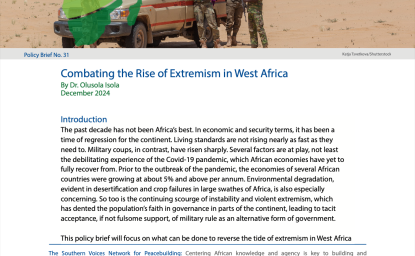Five Years After Osama Bin Laden’s Death, al Qaeda Remains a Threat
The U.S. may have killed off the architect of al-Qaeda, but the group remains a potent global threat—to South Asia and beyond, writes Michael Kugelman.
The U.S. may have killed off the architect of al-Qaeda, but the group remains a potent global threat—to South Asia and beyond, writes Michael Kugelman.

Five years after Osama Bin Laden was killed in Abbottabad, Pakistan, his global terror syndicate continues to flourish.
Al Qaeda boasts a variety of regional affiliates across the Middle East and Africa, most notably al Qaeda in the Arabian Peninsula, which remains a considerable threat to the West.
Islamic State has dominated terrorism-related headlines for nearly two years, but some of the world’s deadliest attacks since 2011 have been perpetrated by al-Qaeda or militants affiliated with it. These include strikes on a natural gas facility in Algeria, a mall in Kenya, and the Charlie Hebdo offices in Paris. In the years since Osama Bin Laden’s death, al-Qaeda has also hit U.S. targets, including the U.S. consulate in Benghazi, Libya, and the Fort Hood military base in Texas.
Al Qaeda’s resilience in the Afghanistan-Pakistan region is striking after several years of drone strikes and other counterterrorism measures that have killed some of its top leaders and degraded operational capacities. In October, U.S. forces destroyed what a top U.S. military official called the largest al-Qaeda camp found in Afghanistan since 2001. Al Qaeda’s profile extends outside those two countries: In 2014, al Qaeda announced the establishment of a new South Asia affiliate. In recent months, an al-Qaeda-aligned group has claimed responsibility for killing bloggers in Bangladesh.
In some ways, al Qaeda’s continued clout in South Asia is easy to understand. The area is rich with militants, and nearly all terror groups, including the Taliban and the Haqqani network, harbor close ties with al Qaeda. Stephen Tankel, a terrorism analyst specializing in South Asia, noted in 2013 that al Qaeda projects a strikingly Pakistani identity. Urdu is a predominant language used in the group’s propaganda, and Pakistan is the subject of many of its videos.
For all the talk of Islamic State’s broadening reach, it would be tough for ISIS to make major inroads in South Asia, even though that is the region where al Qaeda has suffered arguably its greatest losses. South Asia abounds with militant groups, not only those aligned with al Qaeda but also some that follow a different sect of Sunni Islam than Islamic State. Sectarian divides in South Asia, while significant, are overall not as deep and violent as those in the Middle East, where they have helped to fuel Islamic State’s rise. Furthermore, national militaries in South Asia are also united in their desire to stamp out the ISIS threat.
In short, the U.S. may have killed off the architect of al-Qaeda, but the group remains a potent global threat—to South Asia and beyond.
The opinions expressed here are solely those of the author.
This artilce was first published in The Wall Street Journal.


The Indo-Pacific Program promotes policy debate and intellectual discussions on US interests in the Asia-Pacific as well as political, economic, security, and social issues relating to the world’s most populous and economically dynamic region. Read more


